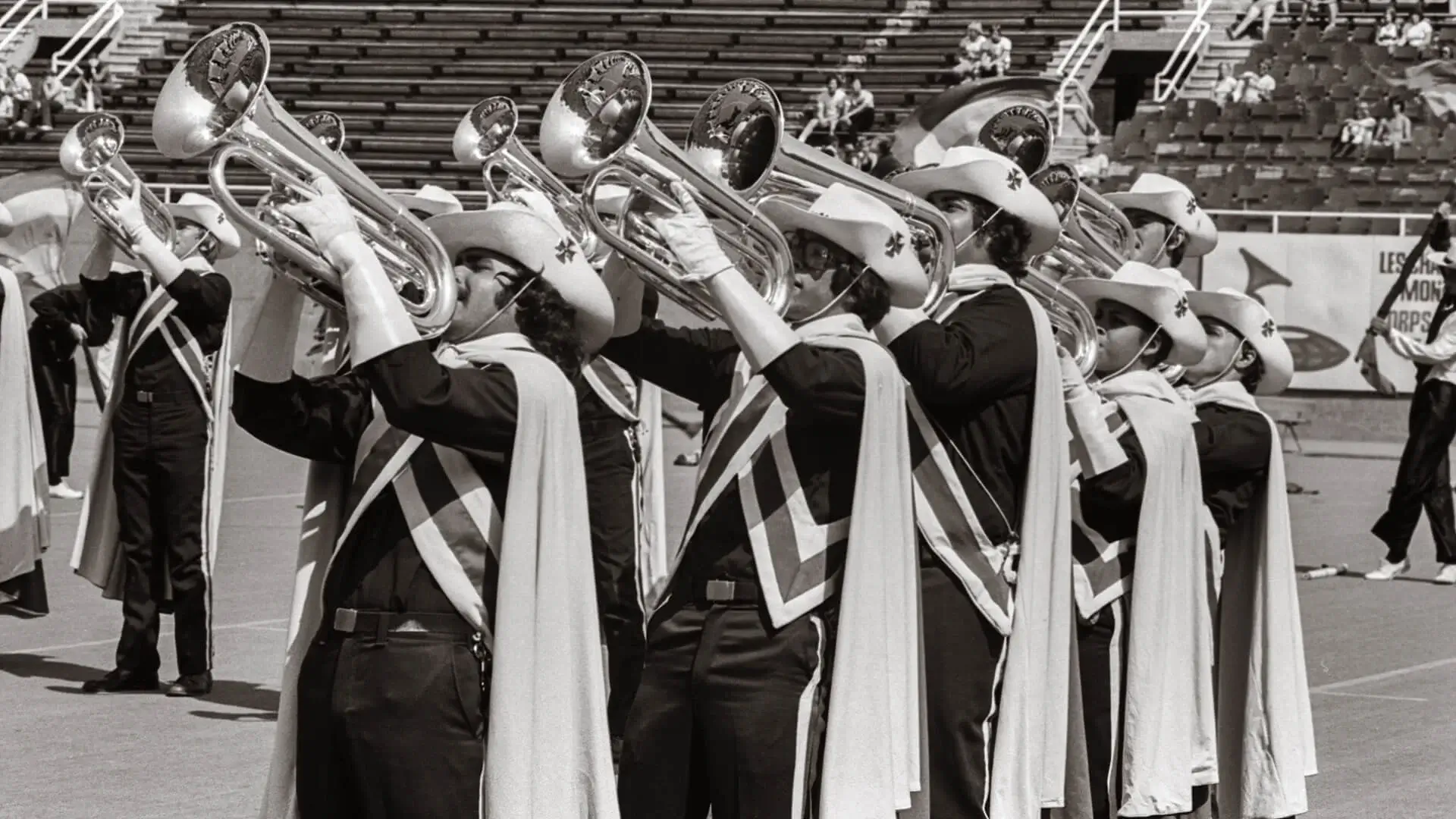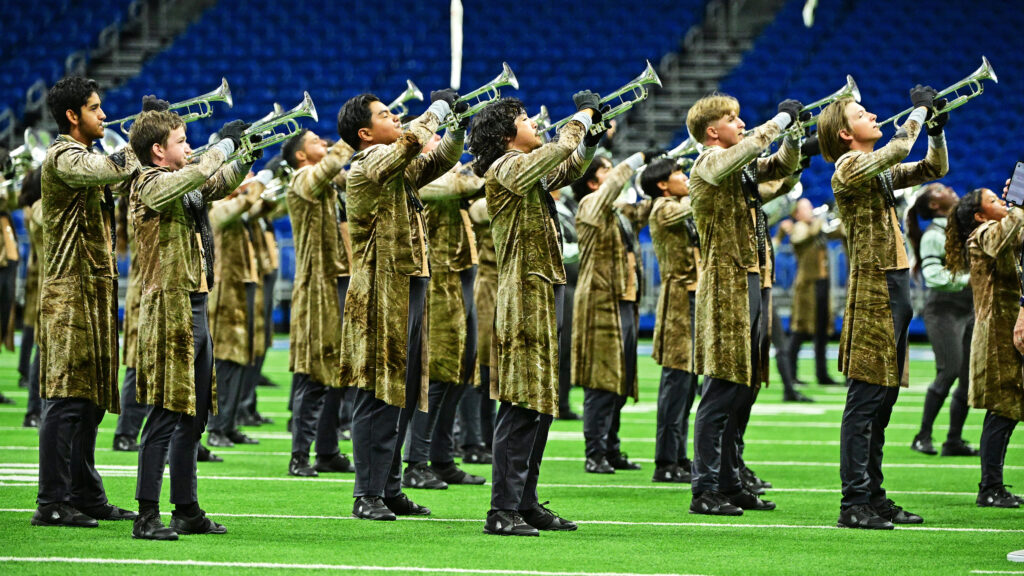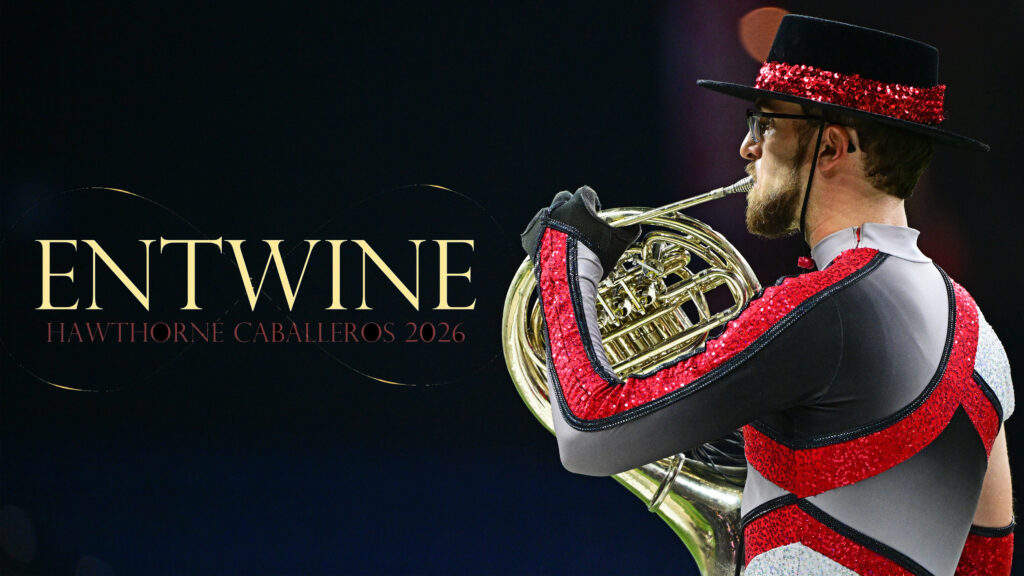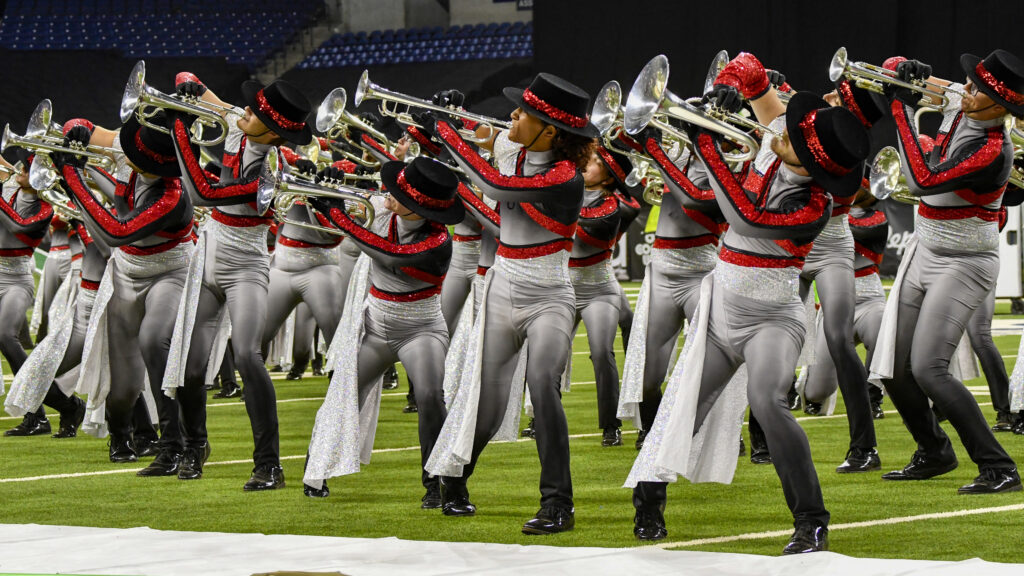The 1981 Drum Corps International World Championships brought corps and fans to Montreal, Quebec for the first of two consecutive years.
For both years, the Prelims competition was held at McGill University’s Molson Stadium and Finals at the cavernous Olympic Stadium, built for the 1976 Olympic Games. On the morning and afternoon of Finals, the corps scheduled to perform were each allowed rehearsal time inside the stadium to become acclimated to the unique acoustics.
Since PBS wasn’t able to secure permission to transmit from Canada until the following year, the 1981 DCI television broadcast took place from the DCI Midwest Championship in Whitewater, Wisconsin, held two weeks prior to the World Championships.
The tenth-anniversary DCI World Championships also witnessed the top six corps all break 90 points in the Finals competition. To this day, the first-place Santa Clara Vanguard remains the only corps to ever win the title after being out of the top-six the year before. Vanguard’s win by three tenths of a point over Blue Devils, prevented the Concord, California corps from becoming the first DCI corps from enjoying a three-peat.

Crossmen placed eighth in 1981 with a hard-driving jazz-themed show. The opener, “Explosion,” was composed by saxophonist and bandleader Matt Catingub. A pops conductor for several symphony orchestras, he wrote the chart for jazz drummer Louis Bellson’s “Dynamite” album of 1979.
The show began with a driving percussion intro in the style of what made fans refer to the corps’ drum line as the “Crossmen groove machine,” leading into an intense brass fanfare as the corps advanced forward. This was followed by the articulate melody that rapidly jumped across wide intervals.
Color guard members partially circled the drum line during a break and spun their flags under the feet of the adjacent performer. For the end of the piece, the brightly colored arced stripes of the flags suddenly doubled as identical flags appeared on the other ends of the poles. This was accomplished by sliding off a black sleeve so that the previously hidden flag suddenly burst out.

A screaming soprano bugle solo opened the corps’ concert standstill production of “Something,” the 1969 George Harrison hit from The Beatles’ hugely popular “Abbey Road” album. This upbeat arrangement came off of Buddy Rich’s “Stick It” studio album of 1972.
When the corps changed its standstill drill formation to move forward, the color guard members were handed additional poles in order to spin two double flags, giving each performer a total of four spinning flags at once. A performer described the act of spinning four flags on two poles as “like having spaghetti arms.”
Crossmen next turned to Chick Corea’s “Spanish Fantasy,” which came off the jazz pianist’s “My Spanish Heart” album of 1976, as the corps’ percussion feature. During this section each member of the horn line picked up one of the flag sets laid on the ground by color guard members at the end of the previous section.

Ian McDougall, a Canadian jazz musician who played lead trombone for Rob McConnell and the Boss Brass, wrote “Bustling” for his own band, the Hog Town Trumpets. Crossmen’s version was by Sammy Nestico, who arranged the work for the 1978 Louis Bellson Big Band Explosion album, “Note Smoking,” the same album that contributed Don Menza’s “Sambandrea Swing” to The Cavaliers’ show the same year. During the first part of this selection the corps played while standing still, with the members of the horn line moving into an oval to the right of the 50-yard line to finish off the piece.
The corps’ closer was marked with Bill Conti’s “Overture” from the 1979 film, “Rocky II,” the sequel to the 1976 smash hit that made Sylvester Stallone a megastar. The production opened with a short fanfare preceding the brass players moving into a diagonal arch formation as the color guard section came in from the left in a block “V.”
The members of the guard held rifles in their right hands while holding the flags in their left hand, hidden behind their torsos. As the horn arc and straight line of drums rotated to the left, the “V” block of color guard performers rotated to the right. The entire form ended up symmetrical to the 50-yard line as the music transitioned into the “Going the Distance” theme borrowed from the first “Rocky” film.
The corps ended the show with a company front maneuver. The soprano bugles worked in a flurry of brass triplet runs to further work the crowd into a frenzy.
1981 Overview

Michael Boo was a member of the Cavaliers from 1975-1977. He wrote about the drum corps activity for more than 35 years while serving as a staff writer for various Drum Corps International projects. During his lifetime Boo wrote for numerous other publications including an honors-winning book on the history of figure skating. He also was an accomplished composer. Boo passed away in 2020 and was inducted into the DCI Hall of Fame posthumously in 2021.





